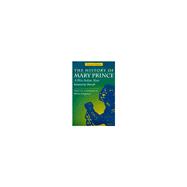

It is unknown whether she died in Britain or was able to return, free, to Antigua. Unfortunately, the remainder of Mary Prince's life is a mystery. She told her life story to abolitionist sympathisers, and it was published in 1831 as 'The History of Mary Prince' - attracting a large readership just as the anti-slavery movement was mounting a powerful and ultimately successful campaign for the emancipation of all Africans enslaved by the British.


In 1829, she unsuccessfully petitioned parliament for her freedom, so she could return to her husband in Antigua without finding herself once again enslaved. Slavery was still legal in the West Indies, but no longer in Britain itself, so once in London, Prince left the Woods and went to the Anti-Slavery Society. In 1828, she was brought from Antigua to England by her then owners, Mr and Mrs John Wood. This work caused sun blisters on exposed parts of the body and painful boils and sores on the legs. For years she was forced to work up to her waist all day in salt ponds, manufacturing salt. She was treated cruelly by a series of masters on several West Indian islands, enduring extreme hardship and sexual abuse. The History of Mary Prince was first published in 1831 in London and Edinburgh and ran to three editions that year as its popularity proved integral to the. First published in England in 1831, The History of Mary Prince, a West Indian Slave is one of. She was born into enslavement on Bermuda around 1788, and sold away from her family at the age of ten. She orally told her story to a third party, who transcribed it.


 0 kommentar(er)
0 kommentar(er)
